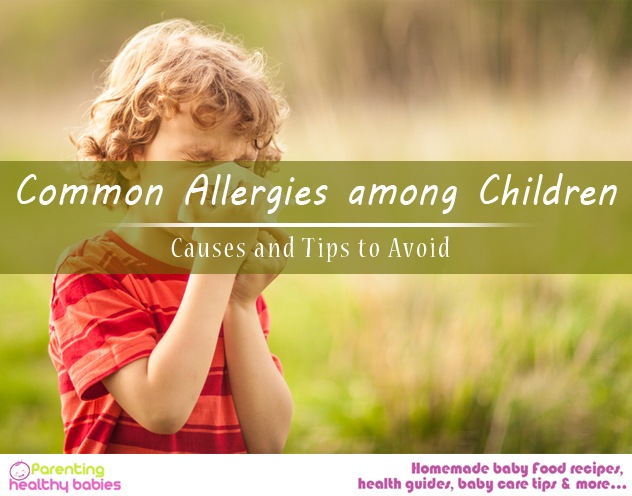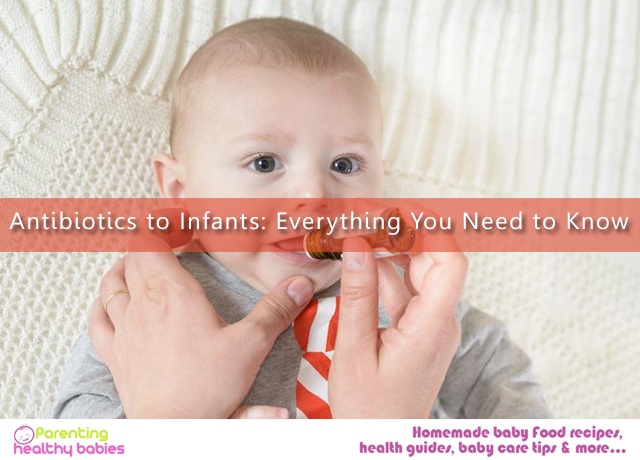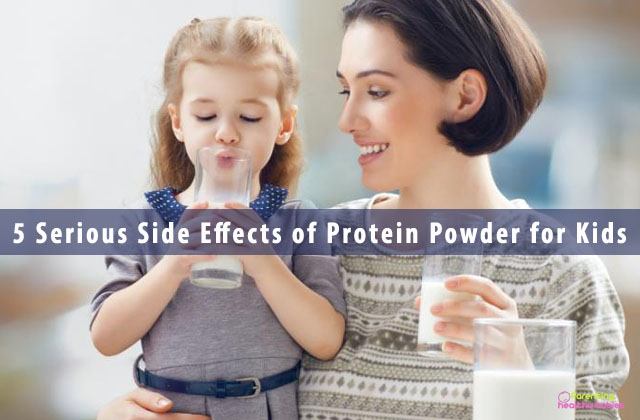Noticed a rash on your child’s body? Worry not! As this may be just a reaction to something he ate or drank. Read on to know the different kinds of allergies in children and what you can do to minimize them.
Allergies are very common not only among children but children as well. A child might be intolerant to some foods or some other things found in every house in common. The allergic reactions need not always be severe. These reactions are limited to itching, sneezing, continuous cough and similar mild reactions.
Read More: 11 Ways to Reduce Pet Allergies at Home
What happens in an allergy?
In an allergic reaction, your child’s immune system kicks in and starts working to defend what according to the body is not a normal substance. This offending substance which is termed an allergen can be food, pollen from the garden, dust or even pet dander. This reaction triggers a host of symptoms. The allergen can be different for different kids.
Common Allergies among Children
Here are some common allergies and visible symptoms of reactions.
Non-food Allergies
- Dust mite allergy
Dust mites are small bugs that live on mould and skin flakes. They are found normally in moist and warm places like pillows, mattresses, soft furnishings, soft toys and carpets. The common symptoms of this allergic reaction are hay fever with sneezing, eczema, asthma, running or blocked nose, itchy eyes, and asthma.
- Pet Allergy
This is the most common allergy found in children due to dander, saliva and hair of the pet. The common symptoms include hives, itchy skin, nose and eyes. This allergy type might also worsen the asthma or eczema of the child.
- Medication Allergy
Sometimes your child might react to certain prescription medications. This might also be due to buying medicines without prescription. Common symptoms of this allergic reaction include swelling or hives. More severe reactions might include difficulty in breathing.
Food Allergies
Food allergies are very common during middle childhood, allergies to dairy products and cow milk being the most common ones. Other common food allergies include allergies to foods like seafood, poultry, nuts, soy, chocolate, wheat, and mushrooms. These allergies are a result of reactions of specific food components with certain antibodies produced by the immune system of the body.
Also, some children for reasons unknown cannot tolerate citrus fruits. It can be hard to keep your child from contracting an allergy. Traces of peanut can hide in cereals and soy can lurk in thickeners in frozen or processed food. It is therefore important to read the label when you shop for groceries, especially if your child is prone to allergies.
The most common symptoms of food allergies include stomach pain, cramping, bloating, diarrhoea, swelling, and skin rash. Other common reactions include sneezing, runny nose, itching, and coughing. Generally, the reactions to food allergies show up immediately after the food item is consumed. However, it might sometimes also show up after hours or even few days of eating.
Causes of Allergic Reactions among Children
Generally, it is very difficult to find out the exact cause of allergies among children. However, here is a list of some common triggers that can lead to allergic reactions among children.
Indoor Allergy
This can be due to pet or animal fur or hair, mold, or dust mites. The best way to reduce this is to regularly get air ducts cleaned. Also keep the child’s room bare minus the rugs and heavy drapes. Wash linen in hot water twice a week.
Outdoor Allergy
This type of allergy occurs because of plant pollen, tree pollen, stings, and insect bites. Keep your child indoors and close the windows to keep allergens when weeds, trees and grasses are in full bloom.
School Allergy
Some kids who are sensitive may also develop allergies due to chalk board dust, and sand in the playground. You may have to instruct the teacher to have your child sit away from the board and wear a protective mask during play time.
Food Allergy
Some of the most common food allergies occur as a reaction to foods like eggs, peanuts, milk products, and even milk. Read the label before you buy groceries.
Tips to Avoid an Allergic Reaction
Here are some helpful tips that can help avoid the allergic reactions:
- Ensure that your child avoids consumption of allergic foods.
- Ensure reading the food ingredients when buying any eatable from market.
- Try sending special food ahead when travelling.
- If you are out for a meal, talk to the restaurant/hotel staff to know about the ingredients used while cooking or preparing food. Sometimes, cooking oils might also contain allergic constituents. For instance, Thai cuisine usually involves the use of peanut oil.
Wrapping up, after the allergic item, food or non-food, has been diagnosed, it is advisable to keep the allergic things away from your child’s reach and adopt respective preventive measures. If your child is allergic to any food, remove the specific food item from the diet of your child. However, the situation might get worse if the child shows allergic reactions to different food items. Under such circumstances, you can consult a doctor to ask for alternative food items for allergic foods.
| Condition | Triggers | Symptoms |
| Anaphylaxis | Foods, medicines, insect stings, latex, and others | Skin, gut, and breathing symptoms that may get worse quickly. Severe symptoms could include trouble breathing and poor blood circulation. |
| Asthma | Cigarette smoke, viral infections, pollen, dust mites, furry animals, cold air, changing weather conditions, exercise, airborne mold spores, and stress | Coughing, wheezing, trouble breathing (especially during activities or exercise); chest tightness |
| Contact dermatitis | Skin contact with poison ivy or oak, latex, household detergents and cleansers, or chemicals in some cosmetics, shampoos, skin medicines, perfumes, and jewelry | Itchy, red, raised patches that may blister if severe. Most patches are found at the areas of direct contact with the allergen. |
| Eczema (atopic dermatitis) | Sometimes made worse by food allergies or coming in contact with allergens such as pollen, dust mites, and furry animals. May also be triggered by irritants, infections, or sweating. | A patchy, dry, red, itchy rash in the creases of the arms, legs, and neck. In infants it often starts on the cheeks, behind the ears, and on the chest, arms, and legs. |
| Food allergies | Any foods, but the most common are eggs, peanuts, milk, nuts, soy, fish, wheat, peas, and shellfish | Vomiting, diarrhea, hives, eczema, trouble breathing, and possibly a drop in blood pressure (shock) |
| Hay fever | Pollen from trees, grasses, or weeds | Stuffy nose, sneezing, runny nose; breathing through the mouth because of stuffy nose; rubbing or wrinkling the nose and face to relieve nasal itch; watery, itchy eyes; redness or swelling in and under the eyes |
| Hives | Food allergies, viral infections, and medicines such as aspirin or penicillin. Sometimes the cause is unknown. | Itchy skin patches, bumps (large and small) commonly known as welts that are more red or pale than the surrounding skin. Hives may be found on different parts of the body and do not stay at the same spot for more than a few hours. |
| Insect sting allergy | Primarily aggressive stinging insects such as yellow jackets, wasps, and fire ants | Anaphylaxis |
| Medication allergy | Various types of medicines or vaccines | Itchy skin rashes, anaphylaxis |













